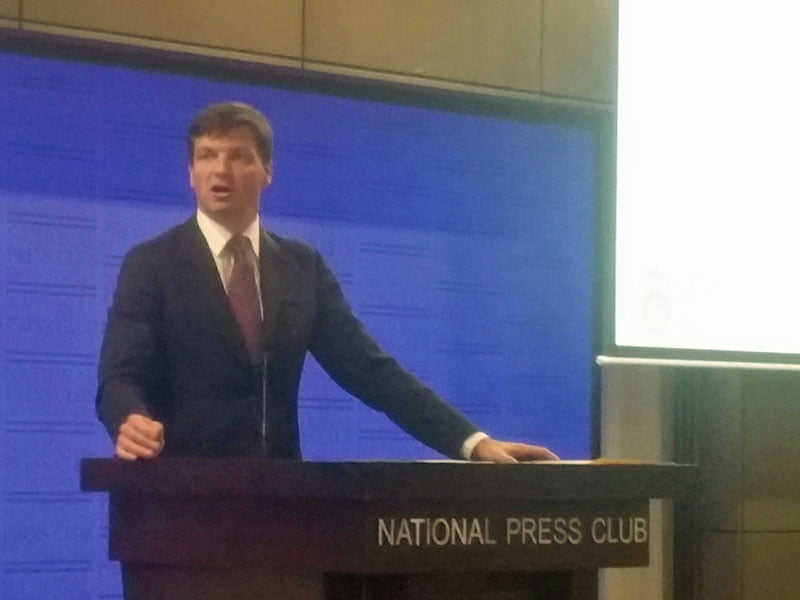The changes wrought by Angus Taylor’s next phase in the Australian Government’s digital agenda marks the biggest overhaul in the Commonwealth’s information technology program in 20 years
The next three months will see the structural building blocks put in place for the delivery of a new digital regime. This is an enormous change, a ground-up redevelopment of billions of dollars’ worth of government technology spend.
It includes the centralisation of technology oversight, the re-engineering of IT procurement, a re-thinking of government-industry engagement, and a bolstering of its existing digital delivery plans. It returns IT program management to a central office.

Not since former Prime Minister John Howard’s whole of government technology outsourcing programs of the late 1990s and early 2000s has such dramatic technology change been so central to service delivery and government administrative planning.
In fact, it could be argued the Assistant Minister for Digital Transformation and Cities Angus Taylor’s announcement at an Australian Information Industry Association (AIIA) lunch in Canberra is a response the structural problems created way back then.
Of course, as always, it is impossible to know where all this lands until the detail is filled in.
But here is what we do know.
Angus Taylor has taken the momentum of the Malcolm Turnbull’s original digital agenda through the Digital Transformation Office and strapped it – very tightly – to government IT strategy.
The name change is minimal – the DTO becomes the DTA – because the intent is the same. But the structural change to the way government manages its technology is enormous.
There are real opportunities for the tech community. Mr Taylor is centralising planning and management – and clearly wants to rebuild in-house expertise across a number of fronts. But philosophically his commitment is to “open up data and processes and to let the private sector in”.
In fact, the DTA has been charged with building a whole of government ICT strategy to sit alongside the digital services blueprint that the DTO has been working on (which will be made public by the end of the November.)
The changes mean that that core technology and service delivery decision-making have been centralised to the Prime Minister’s department. The strategic thinking and management of ICT, digital and data policy have been brought together.
The ICT strategy focuses on three themes which collectively describe a radical overhaul. First, when does government need to own a solution; secondly, when can government partner with a solution; and thirdly when can the government provide secure and reliable APIs and let the private sector innovate a solution.
These are simple questions that address thorny political issues about services delivery. But ultimately it describes potentially quite radical changes to the ‘ownership’ of government services and their delivery.
Mr Taylor spent a bit of time during his AIIA address last week lamenting the lack of mainstream media interest in these changes. He probably should be careful what he wishes for.
If you look at what the DTO has achieved so far, it is arguably more than the government would have hoped for in early 2015.
In fact, when the DTO was announced under the Abbott Government, it had limited support from the central government power structures, and was charged with applying new thinking to entrenched problems and entrenched personalities.
The DTO was a crash or crash through undertaking. In the past 15 months the DTO has been a catalyst for a fairly dramatic change in the way Commonwealth departments and agencies think about service delivery.
Every small project, every public service interaction, has resulted in a change of thinking.
So here we are at the crash-through point: where Cabinet – albeit under a new Prime Minister – has approved a bigger effort, where powerful levers of government have been added to the reinvention of service delivery.
The next three months will tell us much. The executive orders that dictate the changes are expected to be signed by the Governor-General in the next week.
This establishment document will enable the Machinery of Government changes – literally the Australian Public Service movement of people and resources to put the executive orders into effect.
Mr Taylor announced on Friday that Communications Department deputy secretary Nerida O’Loughlin has been appointed as interim-CEO for an initial three months. She will oversee the creation of the DTA infrastructure.
Ms O’Loughlin’s most urgent task will be the recruitment of a permanent CEO. The signals from government are that the role will be filled by a local, either directly from the APS or private sector hire with previous public sector experience. The CEO is reasonably expected to be named by the end of the year.
The DTA advisory board – to be chaired by Australia’s top public servant Martin Parkinson – is expected to be named within weeks, and composed of a roughly 50/50 split between public servants and senior private sector executives.
Ms O’Loughlin is expected to begin work on the whole of government ICT strategy. And she has already opened a public consultation process on the weighty issue of ICT procurement. Mr Taylor has promised a public paper on procurement shortly.
It is the procurement taskforce that is being so closely watched by the industry. This is an enormous opportunity for the Australian industry if it can avoid getting trampled by the multinational ICT interests that are beating a path to the minister’s office.
Do you know more? Contact James Riley via Email.

